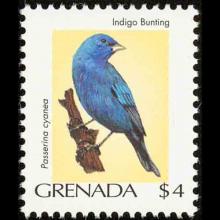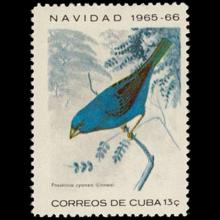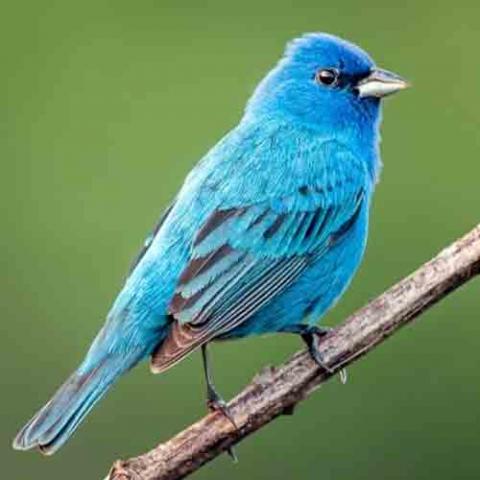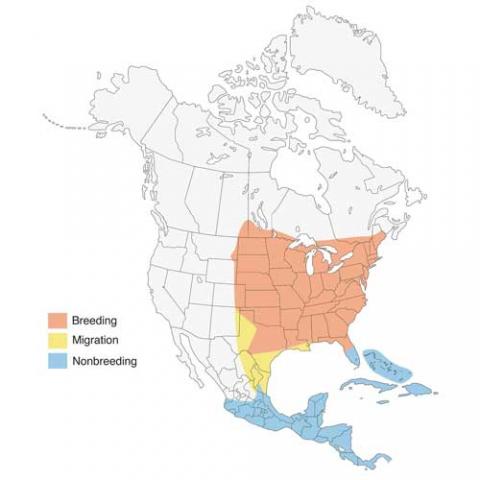NAMES
TAXONOMY
Grenada
Issued:
Stamp:
Passerina cyanea
Cuba
Issued:
Stamp:
Passerina cyanea
Grenada
Issued:
Stamp:
Passerina cyanea
Cuba
Issued:
Stamp:
Passerina cyanea
Grenada
Issued:
Stamp:
Passerina cyanea
Cuba
Issued:
Stamp:
Passerina cyanea
Link (in a new tab) to recordings of: Passerina cyanea (Indigo bunting) at https://xeno-canto.org
Genus species (Animalia): Passerina cyanea
The indigo bunting (Passerina cyanea) is a small seed-eating bird in the cardinal family, Cardinalidae. It is migratory, ranging from southern Canada to northern Florida during the breeding season, and from southern Florida to northern South America during the winter. It often migrates by night, using the stars to navigate. Its habitat is farmland, brush areas, and open woodland. The indigo bunting is closely related to the lazuli bunting and interbreeds with the species where their ranges overlap.
The indigo bunting is a small bird, with a length of 11.5–13 cm (4.5–5.1 in). It displays sexual dimorphism in its coloration; the male is vibrant blue in the summer, with brightly colored plumage during the breeding season to attract a mate. It is brown during the winter months, while the female is brown year-round. Nest-building and incubation are done solely by the female. The diet of the indigo bunting consists primarily of insects during the summer months and seeds during the winter months.
Ecology and behavior
Vocalizations
The indigo bunting communicates through vocalizations and visual cues. A sharp chip! call is used by both sexes, and is used as an alarm call if a nest or chick is threatened. A high-pitched, buzzed zeeep is used as a contact call when the indigo bunting is in flight. The song of the male bird is a high-pitched buzzed sweet-sweet chew-chew sweet-sweet, lasting two to four seconds, sung to mark his territory to other males and to attract females. Each male has a single complex song, which he sings while perched on elevated objects, such as posts, wires, and bush-tops. In areas where the ranges of the lazuli bunting and the indigo bunting overlap, the males defend territories from each another.
The all-blue male Indigo Bunting sings with cheerful gusto and looks like a scrap of sky with wings. Sometimes nicknamed "blue canaries," these brilliantly colored yet common and widespread birds whistle their bouncy songs through the late spring and summer all over eastern North America. Look for Indigo Buntings in weedy fields and shrubby areas near trees, singing from dawn to dusk atop the tallest perch in sight or foraging for seeds and insects in low vegetation.
Reference: wikipedia, www.allaboutbirds.org, NatureServe Explorer




